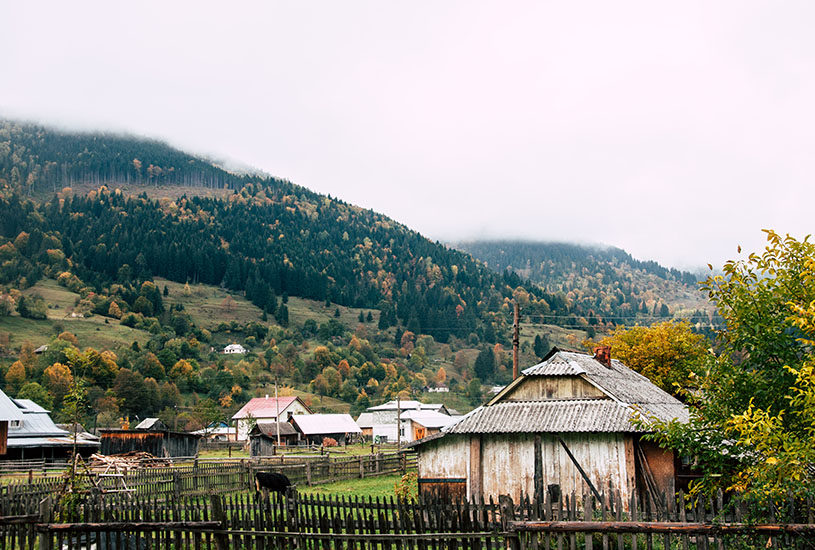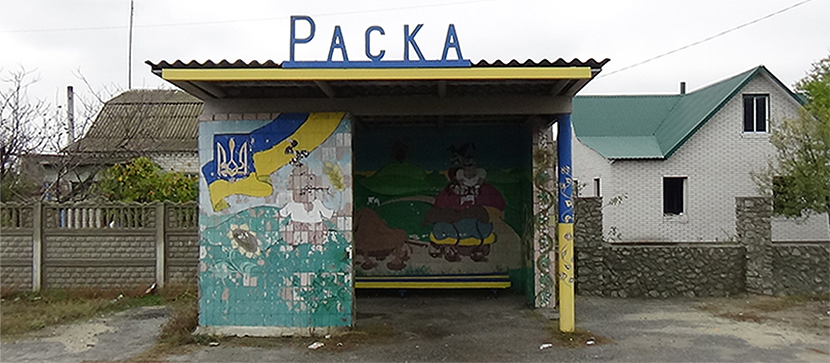A study of soldiers’ post-war battle to rebuild has provided insights about power in Stalin’s Russia.
People think that war ends after the guns fall silent, but for a group of soldiers returning home to a tiny Ukranian village, the war just never ended, research by the Alfred Deakin Institute for Citizenship and Globalisation’s Dr Filip Slaveski shows.
Dr Slaveski is finalising research into the declassified archives of the former Soviet Union from 1945 to 1953 as part of a prestigious Federal Government-funded Discovery Early Career Researcher Award (DECRA).
The topic of how World War II continues to shape contemporary Russian and European politics and transitions to peace will be the subject of a two-day conference Commemorating the 100th Anniversary of the Russian Revolution next month in Geelong.
Dr Slaveski is particularly interested in the difficulties of post-war reconstruction and the mass violence that occurred in Ukraine and the Baltics during the period.
Above: A bus stop in the village of Raska, Kiev.
“The documents are important because they talk about the post-war situation across the Soviet Union and Soviet-occupied Europe, as well as its contemporary echoes,” he said.
“What happened in Moscow influenced what happened in Europe and the West.”
The latest story to emerge from his research is the fate of a village in West Kiev, which had been occupied by the Germans in World War II. As the Red Army fought to liberate the city and the German’s retreated, the village was destroyed and many of its residents murdered.
“When the Ukrainian soldiers returned home all they wanted to do was bury their dead, rebuild and build a memorial. This was a common fate across the occupied Soviet Union. What is unique is that they were stopped from doing this and eking out an existence by the local government,” he said.
“What was more surprising was that the Central Soviet Government came down in support of the former soldiers.
[testimonial_text]I couldn’t understand why on earth the local government would go against the central government in this way and want to stop the soldiers, but the archives only took me so far, so I went to the village.[/testimonial_text]
[testimonial_picture name=”Dr Filip Slaveski” details=”Alfred Deakin Institute for Citizenship and Globalisation”]
 [/testimonial_picture]
[/testimonial_picture]He spoke to survivors of the wartime massacre, as well as the nephew of one of the chief players in the story. This, in turn, attracted the interest of concerned local police and administrators, who “wanted to know why someone would come from Australia to ask about the post-war history of this village.”
“I explained the project and the history and why I was so interested. I then got some incredible support from the locals and gained much insight at the local level, which complemented the archival research,” Dr Slaveski said.
“One theory as to why the soldiers were prevented from rebuilding was corruption, but my visit to the village and talks with the villagers allowed me to set their story within the wider political context of the Soviet Union.
“The local government in this village was trying to turn collective farmland into an industrial area, as part of the broader building efforts. The problem was that Moscow’s plan for rebuilding relied on the expansion, not reduction, of collective farm area. Here was a clash between different visions for rebuilding the country, with the soldiers stuck in between.
“All wanted to rebuild the area, but in different ways. They were operating at cross purposes.”
Above: The remains of the collective farm in Raska, Kiev.
Dr Slaveski said collective farming collapsed with the Soviet Union and people in the village now eked out an existence on farmlands whose purity is in question – they are only 100km southwest of Chernobyl.
“This village is important because it provides a new lens to re-evaluate the way the former Soviet Union was governed and the way Stalinism operated,” Dr Slaveski explained.
“From the outside, it seemed so powerful and unassailable, yet it was riddled by internal weaknesses.
“The soldiers came back after four years of war, found their village burnt to the ground and the first thing they wanted to do was bury their dead again and build new lives.
“They had to fight another war with the country’s government to do so. In some ways, their war never ended.”
Read more:
- The Chaotic Transition from War to Peace in Soviet-Occupied Europe 1945-53
- “Russia,” The Conversation.
- Search of Communist archives uncovers discussion of toilet rolls, socks and Russian fears of invasion
- DECRA awarded: The Chaotic Transition from War to Peace in Soviet-Occupied Europe
Published by Deakin Research on 4 October 2017





